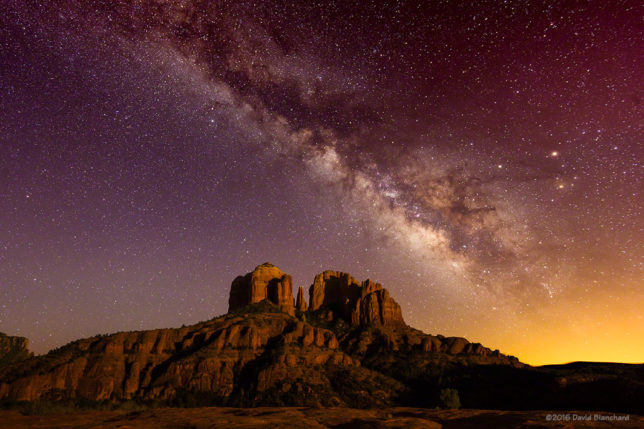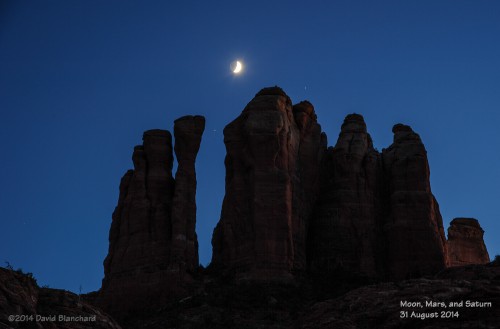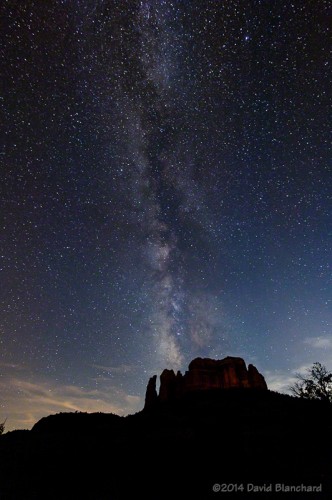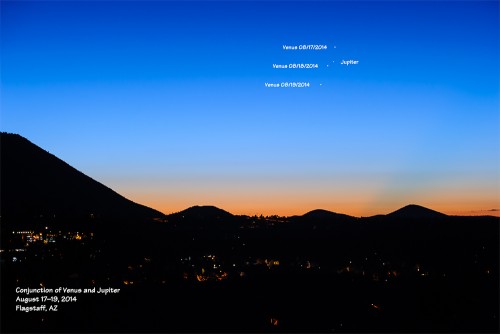The Milky Way rises above Cathedral Rock which is lit by the setting crescent moon. To the right, the triplet of Mars, Saturn, and Antares in the constellation Scorpius stand out as the brightest points of light. In the center of the triangle formed by these three objects lies the Rho Ophiuchi cloud complex, a nebula of gas and dust that appear in the image as dark bands.

This is a composite of two images. The first was taken of Cathedral Rock as the moon was setting in the west. An exposure of 120 seconds at ISO 400 and an aperture of f/4 was used. The second image was taken a short time later after the moon had set allowing the fainter stars in the night sky to appear. This image was 8 minutes at ISO 400 and an aperture of f/4. To prevent streaking of the stars an iOptron Sky Tracker was used. The two images were then blended together.
There will be several more opportunities during the spring and early summer for images like this as the moon sets in the west and the Milky Way rises in the east.

As twilight began in the east and the stars began to fade I switched lenses to a short telephoto to zoom in on Rho Ophiuchi to better show the dark dust present in this nebula. This is a 120-second exposure at f/2.8 and ISO 400 using an 85 mm lens.





